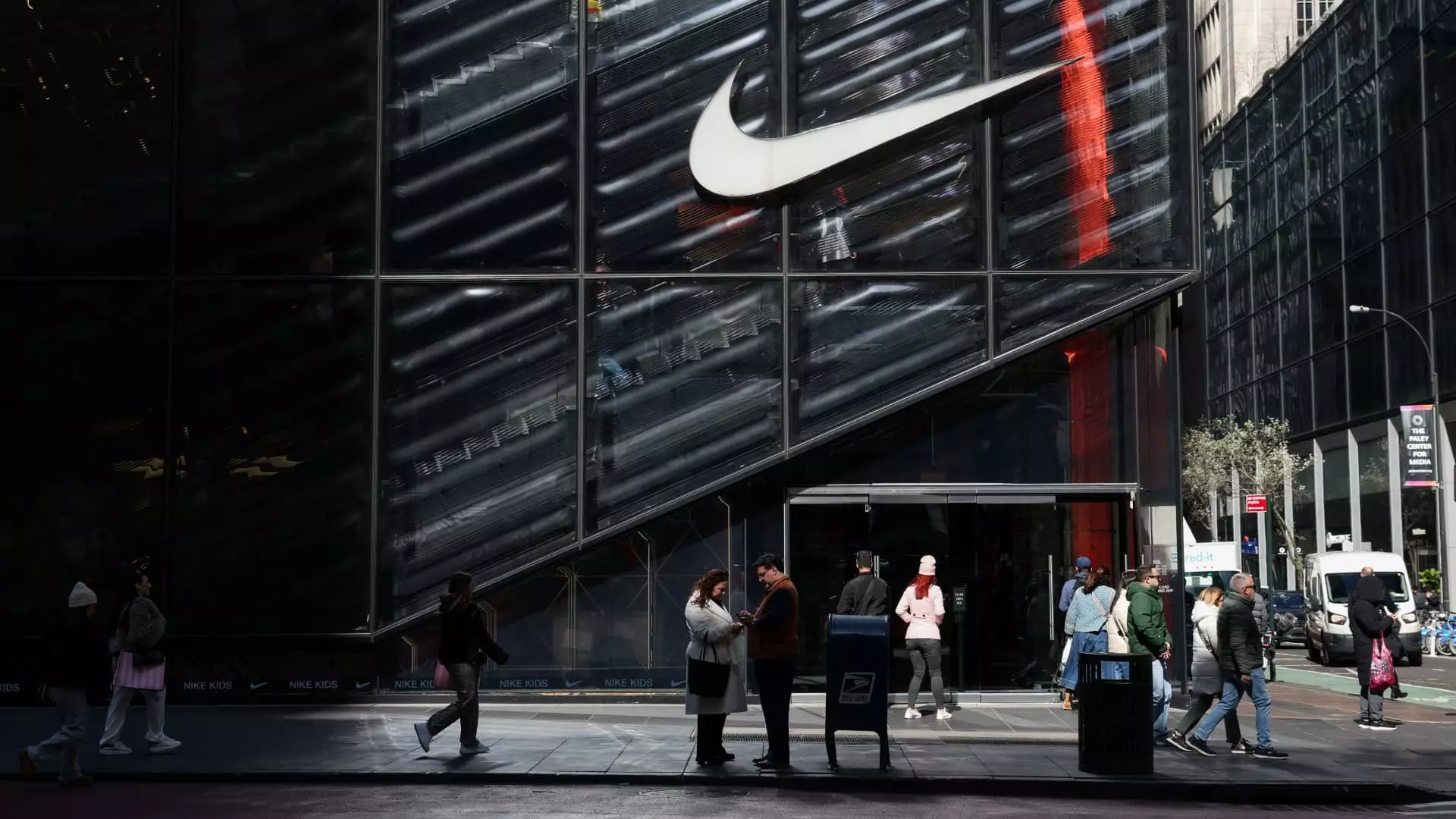As the winds of economic uncertainty blow through the corridors of corporate America, one cannot help but notice the devastating repercussions of President Donald Trump’s bold tariff agenda. With myriad companies now faced with the burden of increased costs, investors are left reeling from plummeting stock prices. The implications of these policies extend beyond mere pennies and dollars; they spin a web of interconnected challenges that could leave retailers gasping for breath.
Lululemon: The Sporting Goods Giant Takes a Hit
One of the most alarming shocks has come from Lululemon, which saw its shares fall by a staggering 12% almost overnight. The company’s reliance on Vietnamese manufacturing—a staggering 40% of their products are sourced from this country—could turn out to be its Achilles’ heel. With tariffs hitting a suffocating 46%, Lululemon stands poised on the brink of a crisis. How can a company relying so heavily on distant shores be deemed economically sound in today’s tumultuous climate? High tariffs drive prices upwards, and consumers, already battered by inflation, may tighten their wallets even more, making luxury athletic apparel a non-essential purchase.
Nike: A Knock on the Door of Devaluation
It wasn’t just Lululemon that felt the wrath of Trump’s tariff hammer; Nike’s stock took a significant hit as well, dropping around 9%. The company sources roughly half of its footwear from high-tariff Asian nations like China and Vietnam. In an era where brand loyalty is pivotal, the threat of substantially increased prices could diminish consumer trust and shift patronage to competitors offering more affordable alternatives. The athletic apparel giant may be left to grapple with not just lower valuation, but also the possibility of diminished market share.
The Discount Dilemma: Dollar Tree and Five Below Dive Deep
Moreover, discount giants such as Dollar Tree and Five Below have not been immune to the adverse economic climate, with their stocks tumbling more than 10% and 15%, respectively. The rhetoric around price increases has already begun, indicating that consumers will directly bear the brunt of the tariffs. For these businesses, the risk is twofold: not only do they suffer from declining sales, but their efforts to raise prices can result in alienating their cost-conscious consumer base. In this delicate dance, how these companies navigate their next moves could determine their survival.
Big Tech’s Uneasy Future
Tech stocks are also in a precarious position. Firms like Nvidia and Apple saw drops exceeding 5% and 7%, respectively, with fears of profit erosion casting a shadow over their enormous market capitalizations. The technology sector operates on thin margins, and the potential for higher manufacturing costs is fueling investor anxiety. Should these behemoths retreat from domestic investments as they brace for the fallout? Market speculation on their future direction indicates an unsettling trend that could reverberate through every digital transaction.
Bank Stocks: Anxiety Takes its Toll
Financial institutions have also felt the heat, with JPMorgan and other major banks experiencing sharp declines exceeding 4%. This drop doesn’t merely reflect reduced investor confidence; it raises significant concerns about overall economic health. As banks bear the brunt of potential consignment on corporate loans due to burgeoning tariffs, their cautious outlook could stifle economic growth. Will this lead to less lending and, subsequently, a contraction in job creation? The prospects are grim, casting a pall over the broader financial landscape.
A Towering Threat: Luxury in Decline
The luxury sector paints yet another portrait of turmoil, with RH, the luxury home furnishing retailer, plummeting a staggering 28%. When executives indicate they are grappling with “the worst housing market in almost 50 years,” it rings alarm bells across the industry. A lackluster housing market paired with high tariffs is a recipe for disaster, leading to hesitant consumers and reduced spending. If high-end brands cannot maintain their status as symbols of aspiration, they risk becoming relics of a bygone era.
As we traverse these alarming economic landscapes, it becomes evident that the repercussions of one policy can unleash a torrent that eventually impacts far more than the targeted industries. The prices we pay and the choices we make are inextricably linked to a complex interplay of tariffs and trade, driven and shaped by political and economic policy. Only time will reveal whether America can fracture free from this storm, but for now, it is clear that the ramifications are hitting closer to home than many would like to admit.

